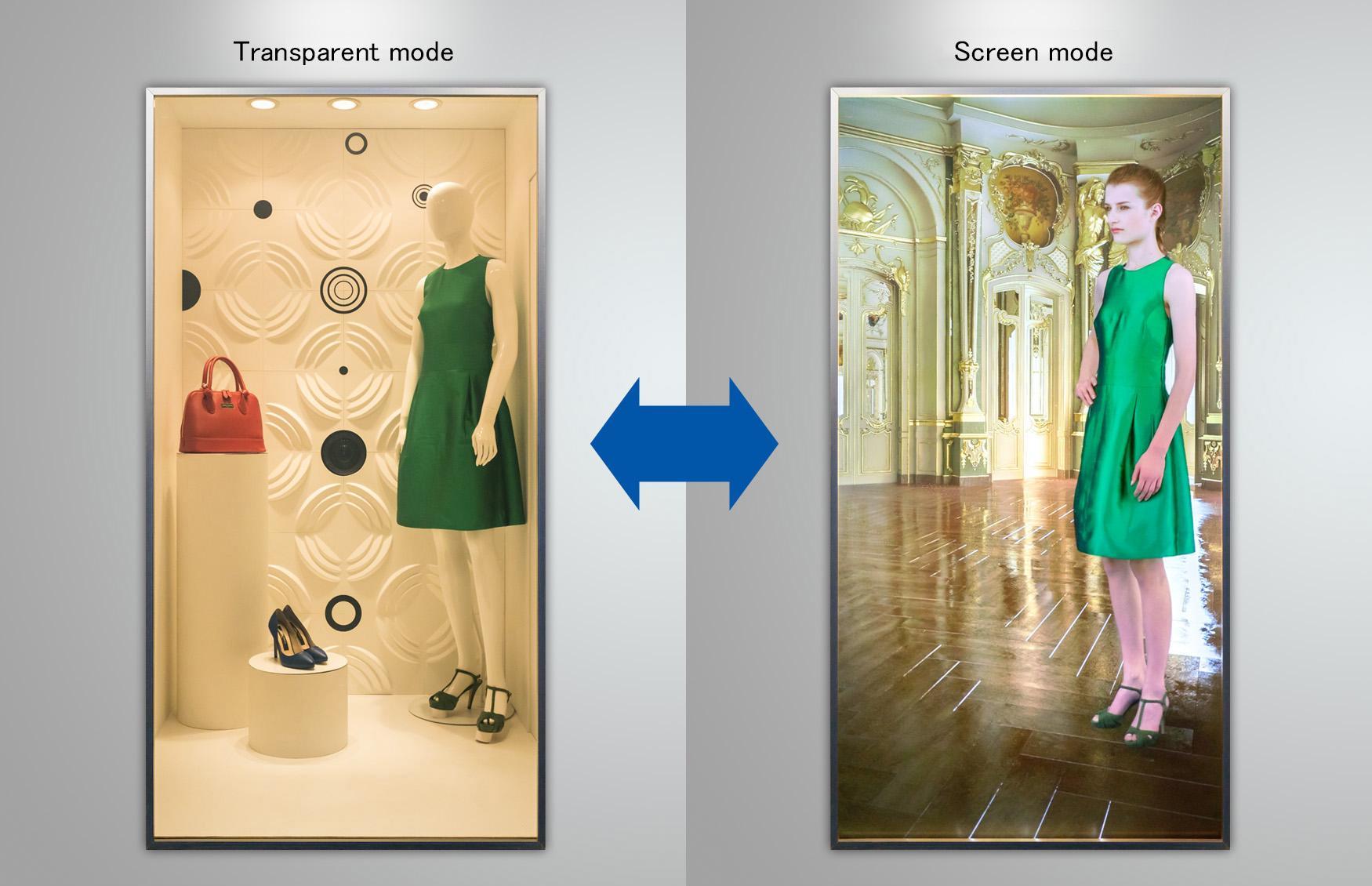
Panasonic To Market Digital Shop Windows That Can Switch Off To Transparent
February 16, 2017 by Dave Haynes
Panasonic’s Japan head office says it will start marketing a new window glass projection solution next month as an alternative to high-bright flat panels and other display technologies.
The “high image contrast transparent screen” is a light control film sandwiched between two sheets of glass that can be transparent in an off state, and have a projection film when turned on by applying voltage through a controller.
The result is a shop window or other glass that is still 70 percent transparent with that film in there – so shoppers can see inside easily – and can switch over to the film to blast images, from the projector, that are touted to be as rich as what you’d see from cloudy projection films or LCD displays.
This product will include XC-CSG01G, a unique glass comprised of a high contrast light control film placed in between 2 sheets of glass, which when voltage is applied changes from the screen mode to the transparent mode, as well as XC-CSC01G-A1, a control box. Images are projected (from the rear) onto the glass during the screen mode. The control box will synchronously operate the projector and the screen per the image content, and change the screen from transparent mode to screen mode.
During the transparent mode, it will serve as a shop window showcasing products and exhibits, and during the screen mode it can reproduce high resolution images on the glass to introduce information about new products or about various campaigns during the sale season, helping transform the show window into an even more captivating environment. Moreover, multiple screens may be combined to create one large screen.
Here’s Panasonic’s informative (but kind of awful, looks like it was done by engineers, not marketers) video:
https://youtu.be/TiWnqsfci6E
If you are technical, you can nerd out on this stuff (and if not, move on):
Key features:
1. Reproduces high contrast images onto a large transparent glass
1) Realizes high contrast images by absorbing external light
Traditionally, images have been projected onto cloudy white, electric switchable glass, but this type of glass was incapable of displaying high contrast images due to image degradation caused by external light.
Panasonic has combined glass with a high contrast light control film, which is comprised of a transparent-cloudy white switching layer containing special polymers and capsules and a color hue control layer. The color hue control layer will absorb a great deal of external light in screen mode, thereby significantly reducing image degradation and bringing to life high contrast images on par with digital signage, even in brightly lit environments.
2) Can optimize image quality according to the installation environment
By adjusting the color hue control layer’s permeability depending on the level of lighting in the installation environment, the screen can maintain the same level of high contrast in environments of varying brightness. In brightly lit spaces, it can reproduce images with rich blacks, and in dark environments, it can reproduce high contrast images even with a compact projector.
2. Serves as a show window displaying products and exhibits clearly
In the transparent mode, voltage is applied to the transparent – cloudy white switching layer which will give regularity to the arrangement of the light crystal molecules inside, thereby enabling the light to directly pass through. Moreover, by applying the maximum voltage to the color hue control layer, the permeability of the high contrast light control film will be improved.
With the anti-reflective (AR) film (optional) on the surface of the glass that reduces unwanted glare, Panasonic has realized a permeability of approximately 68%. This enables the glass to serve as a shop window, giving a clear view of products and exhibits behind the glass.
3. Numerous screens may be combined and controlled as a single large screen system
Numerous screens may be combined horizontally, so for example, a 221-inch (16:9) screen measuring 4.9m wide and 2.75m tall can be created.
The control box will switch between transparent and screen modes, control the projector, and turn ON/OFF the lighting in the exhibition space behind the glass.
The release does not have any commercial detail, so who knows what this costs and whether this is a Japan-only product or something to consider in North America and Europe.
It’s interesting, in that traditional projection films can look good, but make windows permanently opaque. It also helps that laser projector are coming on to the market now that hugely extend the service intervals for projectors. Bulbs in projectors are expensive and need to be replaced often (meaning cost and it’s a pain in the butt), while lasers can blast away for years without servicing.



Leave a comment